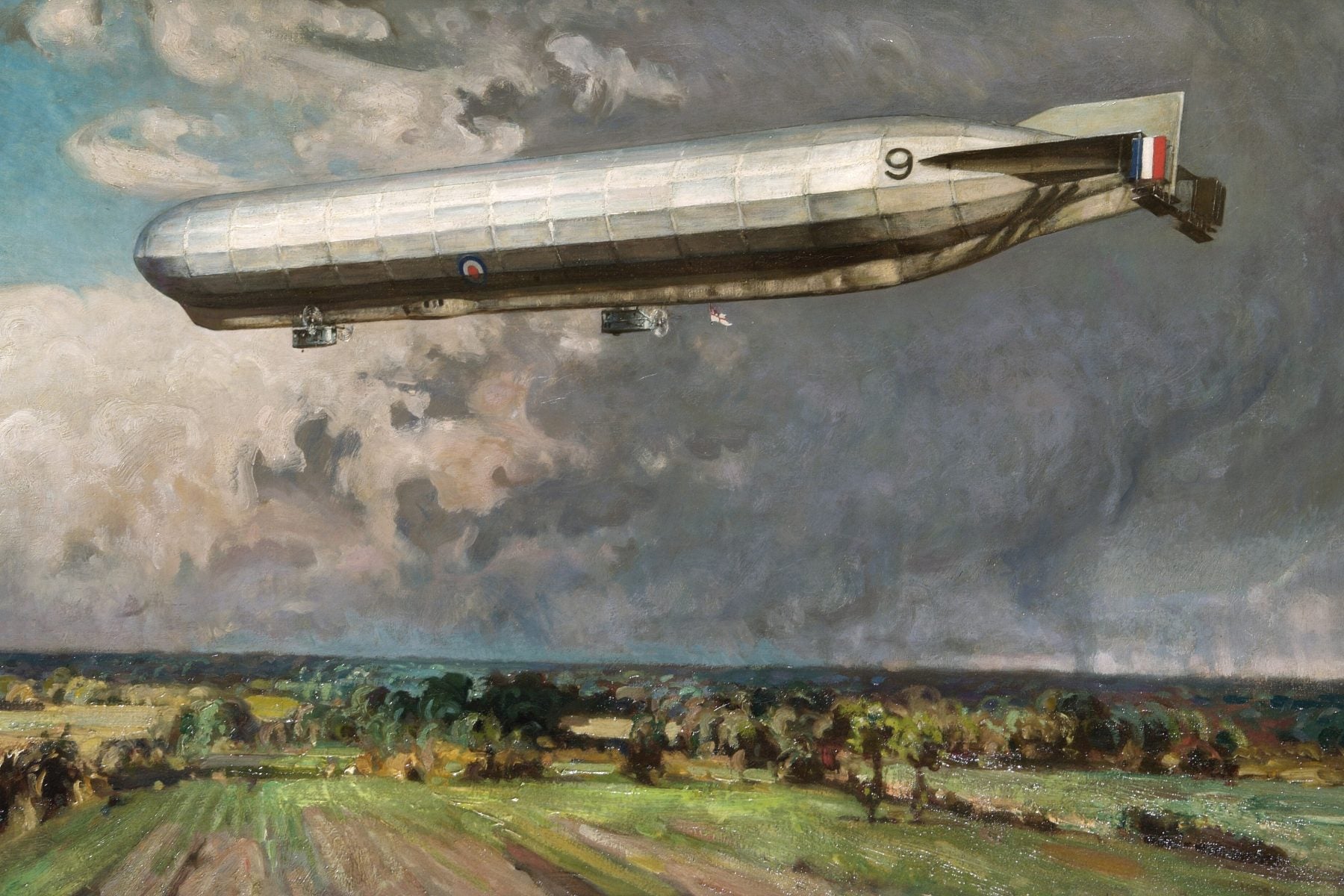As people work to shift away from fossil fuels, one option some in the aviation industry are seriously considering is a return to lighter-than-air flight—airships that stay aloft with the help of helium. But why did this concept fall out of favor to begin with? It has to do with the uneven distribution of a natural resource and efforts to confront Nazism before the start of World War II, as American Philosophical Society researcher Martin L. Levitt explained in 2000.
Levitt notes that, by the start of World War I, people—including the German Count Ferdinand von Zeppelin—had begun flying aircraft lifted by hydrogen. But the dangers of the highly explosive gas were obvious. Helium emerged as an alternative in 1917, when natural gas fields around Petrolia, Texas were found to hold significant quantities of the gas, and researchers developed a method of extracting it.
Helium airships didn’t arrive in time to take part in World War I but, in the wake of the war, US naval strategists made plans to use them for scouting and patrolling the seas. The first helium-inflated naval airship rose in 1921. Almost all the known sources of helium were within US borders, making the gas a “military asset of great value” according to the Navy, which successfully pushed Congress to ban its export so that rivals couldn’t take advantage of it.
The ban went into effect in 1925, Levitt writes, but within a decade the Navy changed its mind about the value of the move. Naval officials determined that exporting helium would allow airship designers in countries like Britain and Germany to develop improvements that would benefit the Americans, too.
By this time, though, the US government was discovering new reasons to keep its helium reserves in the country. When new domestic sources of helium emerged, US officials were nervous about letting Germany get its hands on them. This was not so much about military aircraft as civilian zeppelins. German designers were developing impressive (hydrogen-lifted) airships that the nation’s general public embraced as a symbol of national pride.
“Successful airship operations could only reflect positively on Germany, and with all of the attendant symbolism, would provide useful grist to the Nazi propaganda mill,” Levitt writes.
Weekly Newsletter
In May of 1937, the devastating explosion of the (hydrogen-filled) Hindenburg in New Jersey put all this in a new light. Within months, Congress authorized the sale of helium to foreign operators of civilian airships with routes to America. But Secretary of the Interior Harold Ickes, worried about German military aggression, obstructed helium exports that could potentially be diverted to military use.
As Germany shifted its economy to war footing, it dismantled its airship industry in favor of constructing warplanes. The US, on the other hand, deployed more than 160 blimps over the course of World War II for anti-submarine missions, mine-spotting and air-sea rescue. But, without the momentum of the German commercial airships industry, hope for lighter-than-air civilian flight faded away while fast, fossil-fuel intensive plane travel flourished.
Support JSTOR Daily! Join our new membership program on Patreon today.







